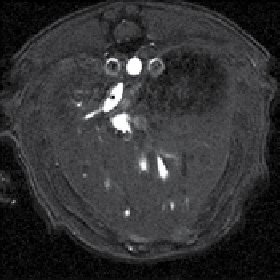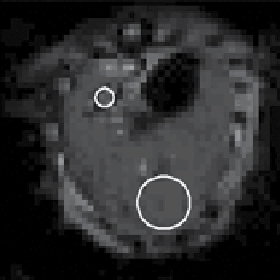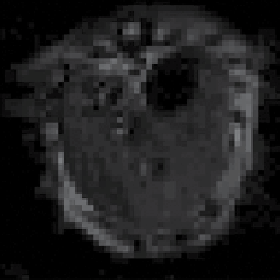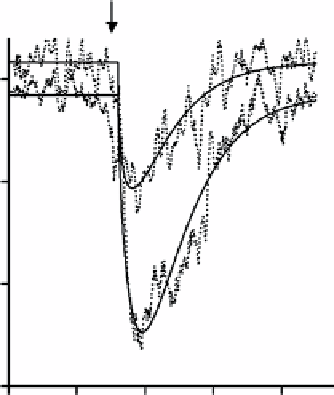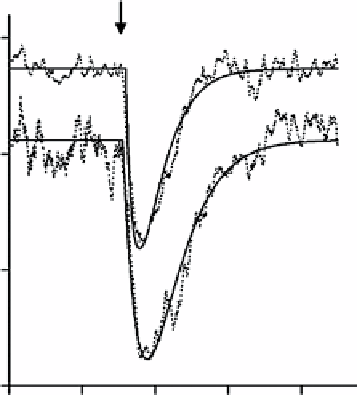Chemistry Reference
In-Depth Information
(a)
(b)
(c)
IVC
LV
(d)
(e)
Start
injection
Start
injection
7500
LV
IVC
LV
8200
IVC
5200
7200
3200
6200
5200
1200
0
200
400
Time (s)
600
800
0
200
400
Time (s)
600
800
fIgure 14.6
Corresponding images from the same rat at two adjacent slice locations during optison® injection: (a) anatomical
images, (b) preinjection
T
2
*
-weighted images, (c) maximum susceptibility contrast images after injection, (d)
T
2
*
-weighted images at ~12
min after injection, and (e) Δ
R
2
*
map computed from (b) and (c). Strong negative enhancement was seen in the venous branches in the
liver. (Reproduced from Ref. [97], with permission from Wiley).
Early experiments with Albunex illustrated the potential of air-filled microbubbles as an MR susceptibility contrast agent
[95]. Another experiment considered the potential of lipid-coated microbubbles as an MR susceptibility contrast agent for
tumour detection, based on the accumulation of the microbubbles inside the tumours [96]. linear relationship between
apparent transverse relaxation rate (
R
2
*
= 1/
T
2
*
) and volume fraction for optison was reported at 7 T [97].
R
2
*
dependency on
microbubble volume fraction was also reported for levovist through an
in vitro
phantom study at 1.5 T [98]. Magnetic sus-
ceptibility enhancement induced by the gas-liquid interface was also demonstrated by simulations and MR experiments using
air-filled cylinders in water [99], consolidating the feasibility of gas-filled microbubbles as a MR susceptibility contrast agent.
The first
in vivo
investigation of susceptibility contrast induced was performed in rat liver at 7 T [97] (Figure 14.6). Recently,
the susceptibility effect of lipid-based microbubble SonoVue and air-filled custom-made albumin-coated microbubbles was
also investigated in rat brain [100]. These results indicate that microbubbles could be used as a unique intravascular MR contrast
agent. Such capability has the potential to lead to real-time MRI guidance in various microbubble-mediated drug delivery and
therapeutic applications.
14.4.2
as an Mr Pressure sensor
other than conventional intravascular contrast agents, the feasibility of microbubbles as an MR pressure sensor, based on the
susceptibility change caused by pressure-induced microbubble size change, has also been explored through theoretical and
phantom studies [94, 101-103].
